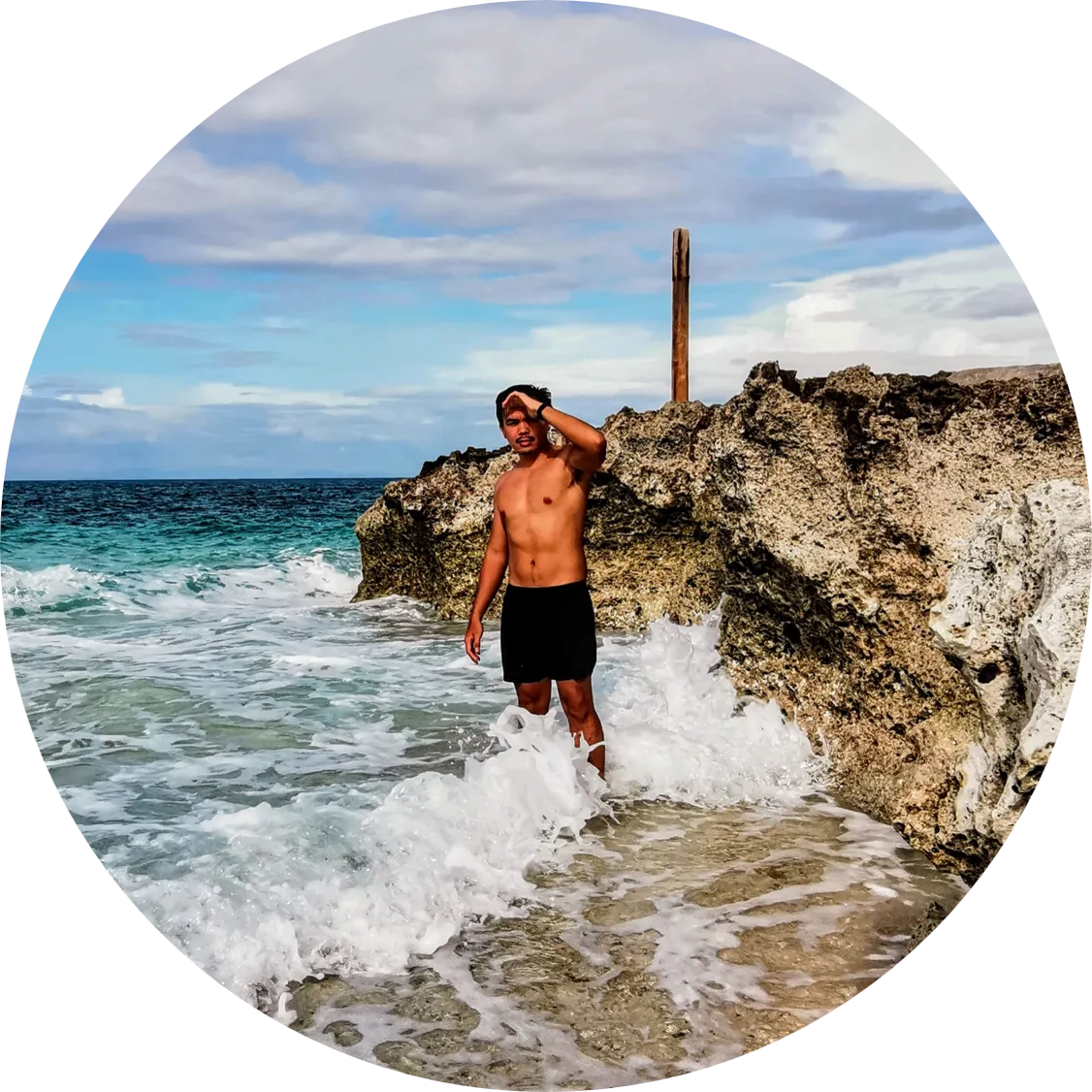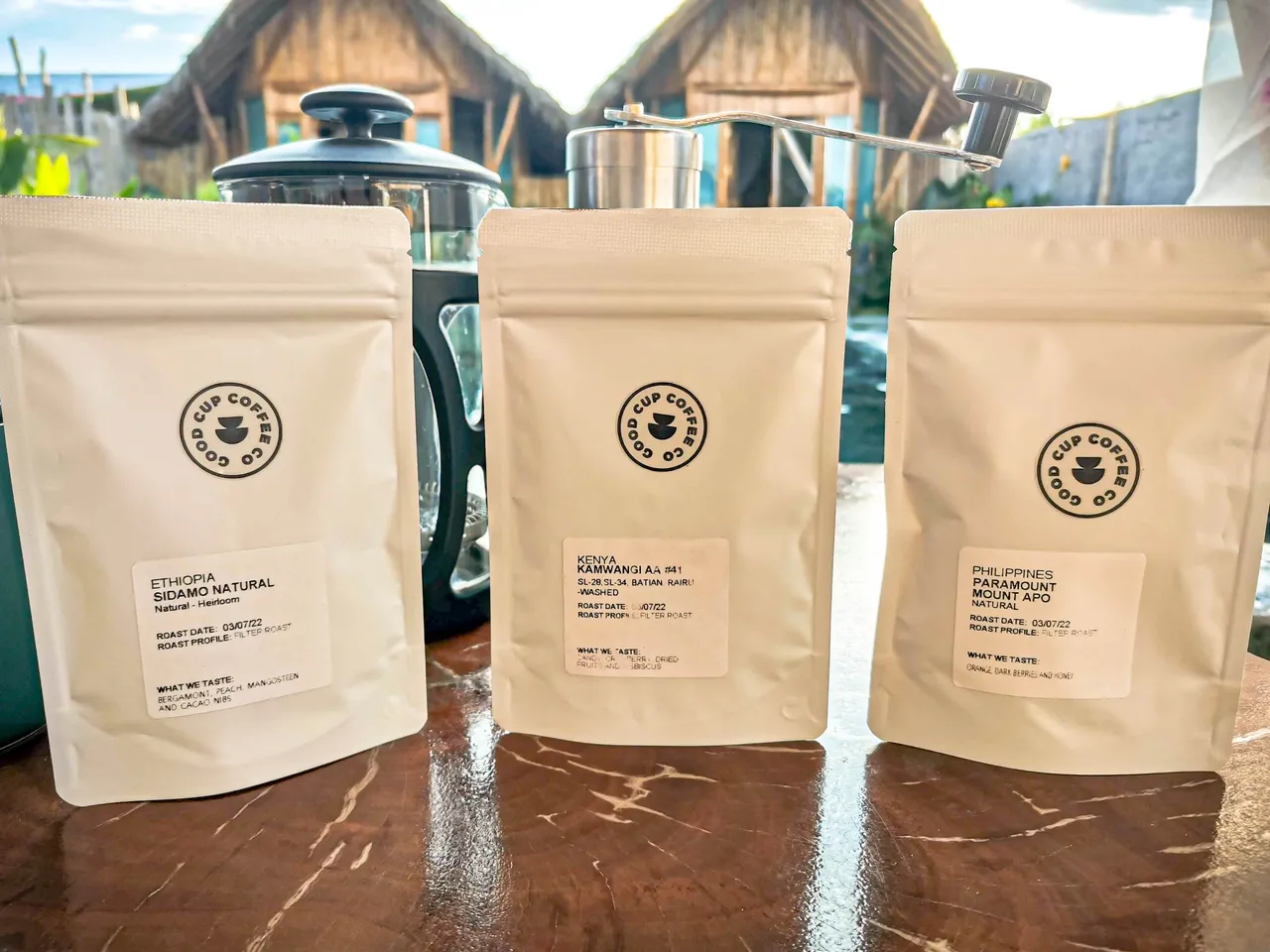
COFFEE GIFTS!
Hello, coffee lovers!
And also to those who don't drink coffee. That includes my girlfriend. But despite this, she takes the effort to scour good coffee beans out there for me to try. In this blog, I'll be sharing my experience in trying out three different coffee beans from The Good Cup Coffee, a purveyor of coffee beans around the world. They are based in Cebu, Philippines but they ship worldwide. They roast the beans in their high-end roasting facility and pack them in different sizes. They have samplers available for each of their beans.
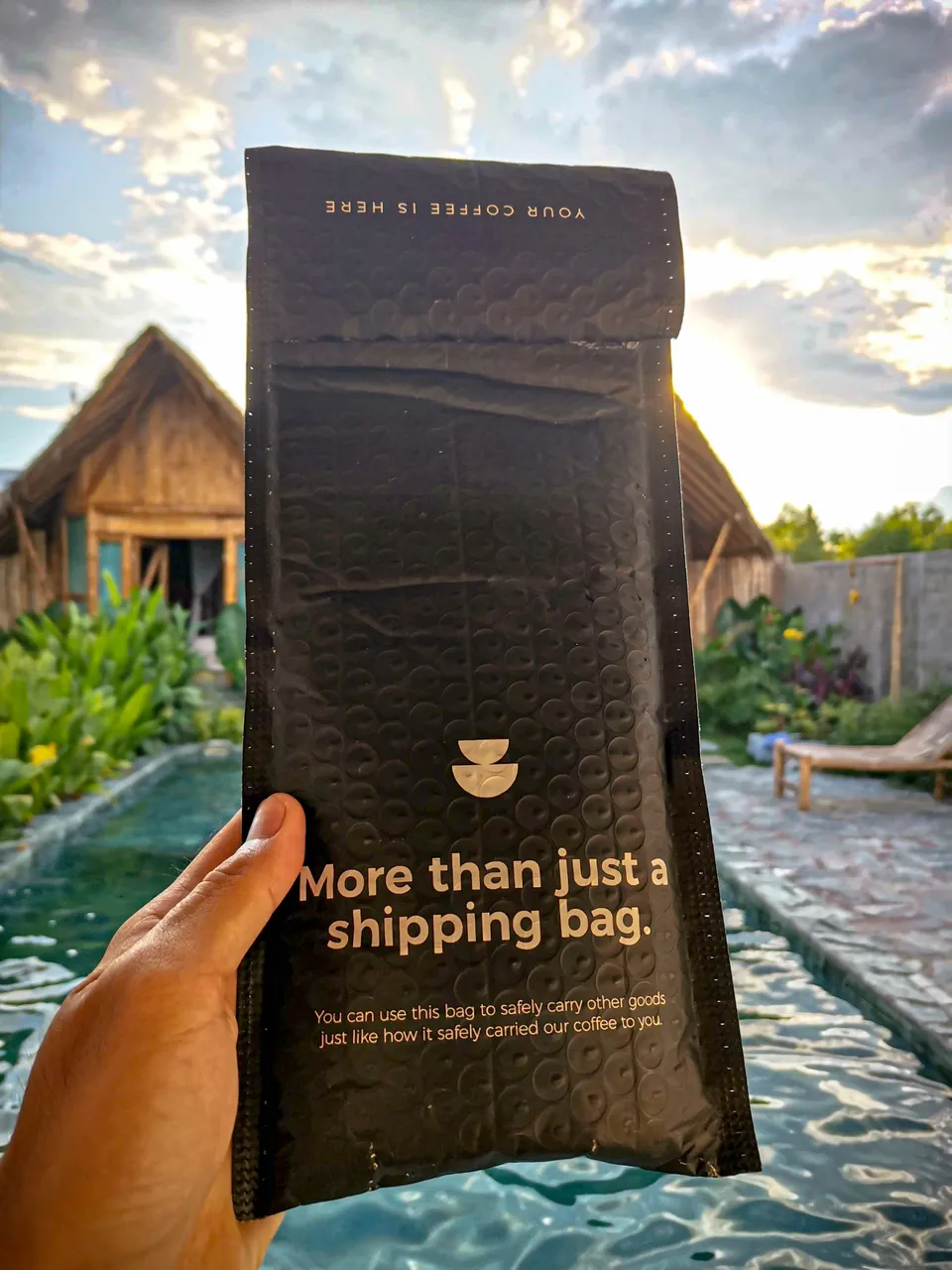
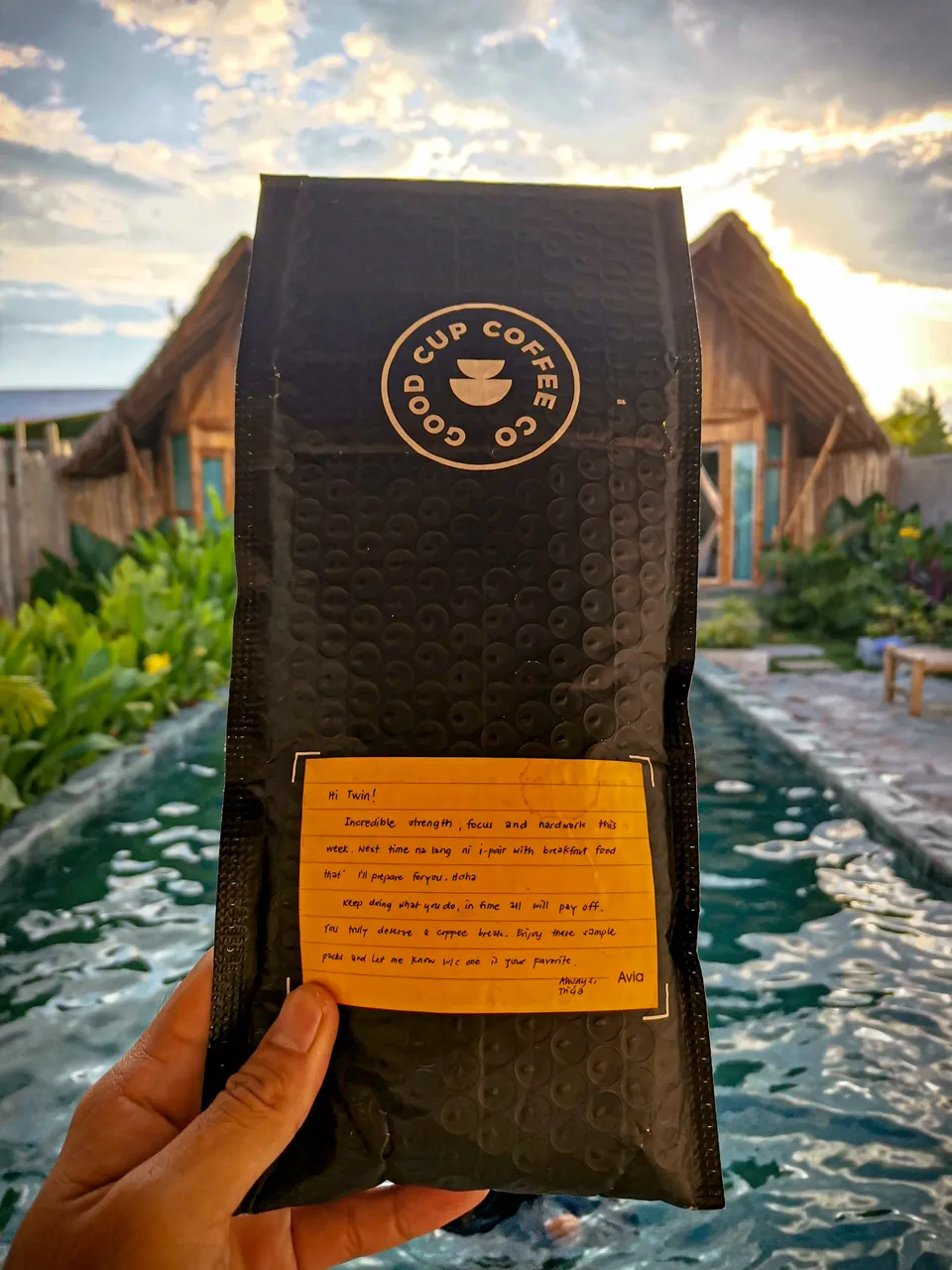
The beans that I'll be reviewing here were a gift from my girlfriend after accomplishing major milestones in my Master's thesis. I remember spending most of my waking days doing my experiments and processing my data. We went out to have brunch and she gave me this cool-looking black bag that contained the samplers. She also wrote a lovely letter on the front.
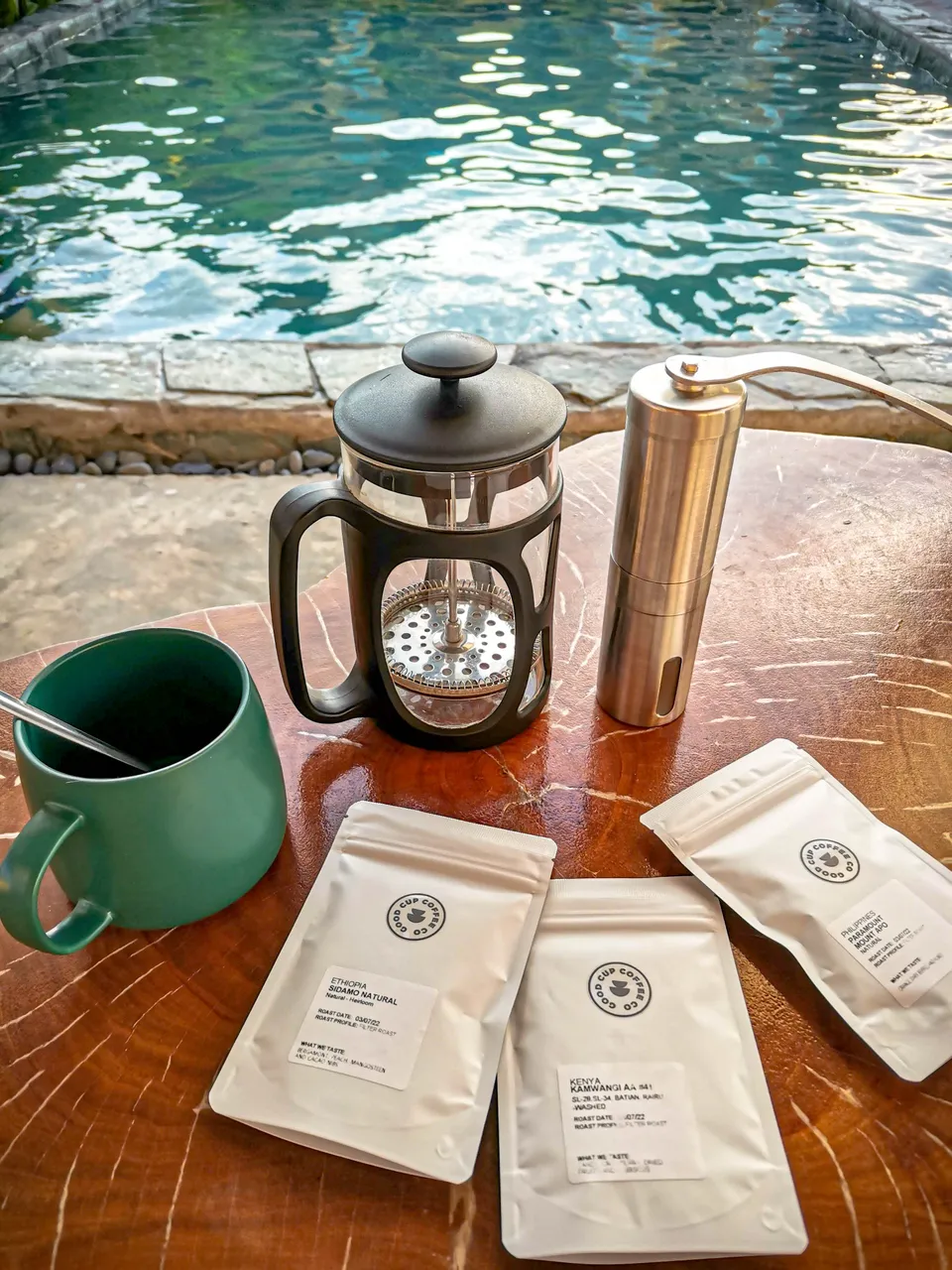
I've been holding on to the beans for quite some time. Maybe a few weeks. I never got the right time or occasion to brew them. When one of my friends invited me to go on a trip to an exclusive resort, I knew it was the perfect time to take them out and try them.

The three samplers were all over the world. The first one I tried was from the Philippines. It was called Paramount Mount Apo. Mount Apo is the tallest mountain in the Philippines and it would make sense that people would be growing coffee there. The beans were Natural, meaning they were naturally processed or dried under the sun without removing the cherry around the bean. This gives the beans a more fruity flavor since it is left with the cherry pulp for some time. The flavor profile of the beans indicated Orange, Dark Berries, and Honey.

The second one I tried (not on the same day), was from Ethiopia. It was called Sidamo Natural. Obviously, it was naturally processed as well. It also had the term, Heirloom, on its packaging. I've looked it up online and the term is commonly used for coffee beans from Ethiopia, indicating that the beans were harvested from many different varieties. The flavor profile of the beans included Bergamont, Peach, Mangosteen, and Cacao Nibs.
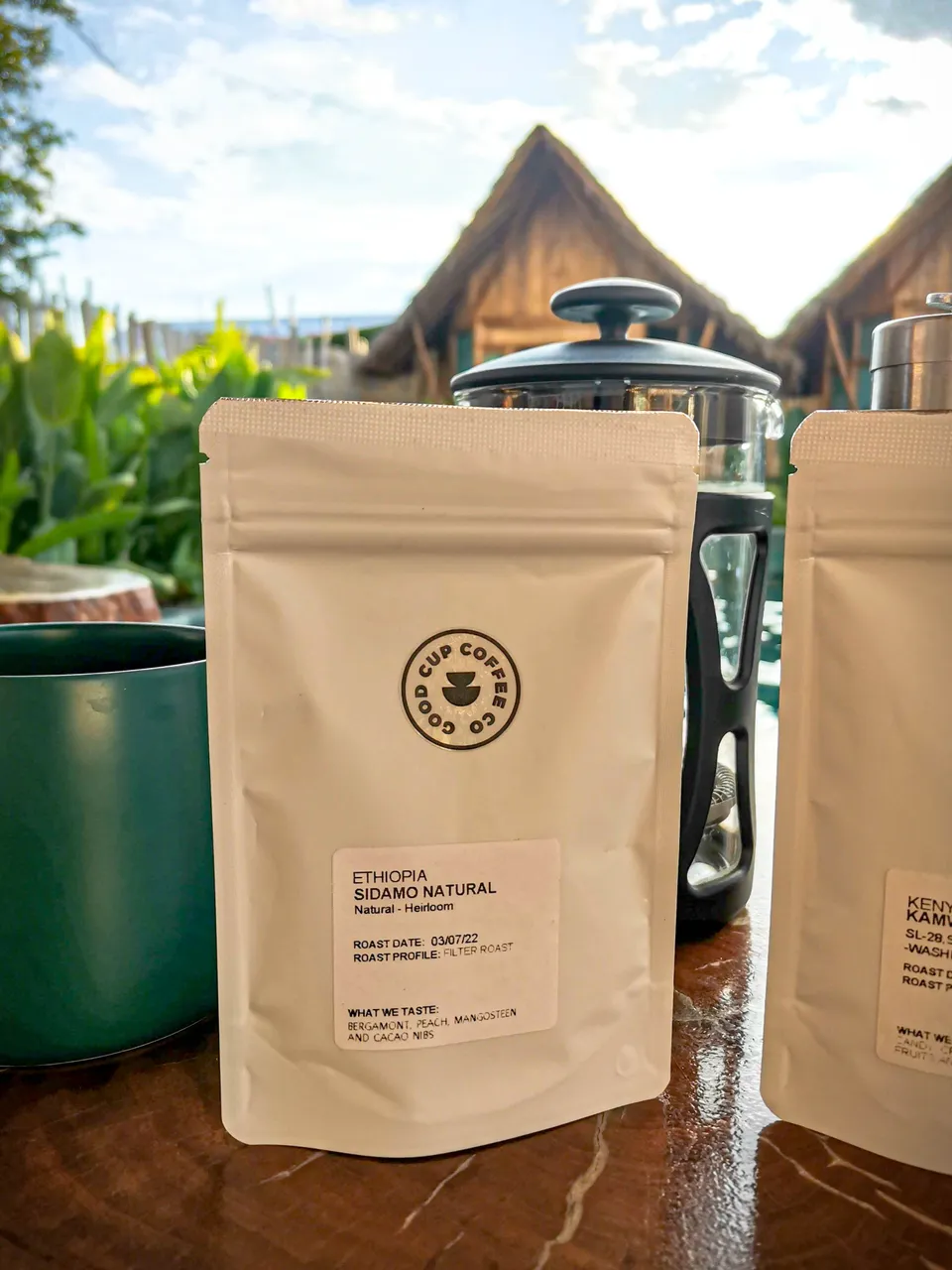
The last sampler I tried was from Kenya. It was called Kamwangi AA #41. Most coffee beans are named from where they originated. Kamwangi is a place in Kenya where the coffee beans are washed. The beans are washed or undergo wet processing wherein the cherry is removed, and the beans are allowed to ferment, before being washed and dried. This results in a flavor profile that is more acidic and a lighter body. The packaging of the beans said that the flavor profile was Candy, Cranberry, Dried Fruits, and Hibiscus.

Our trip brought us to Bambusa Glamping Resort, an exclusive tropical stay in Moalboal, Cebu. I'll make another blog post about it. We left on a Thursday and the trip would last until the weekend. I planned on brewing the beans each day for three days.
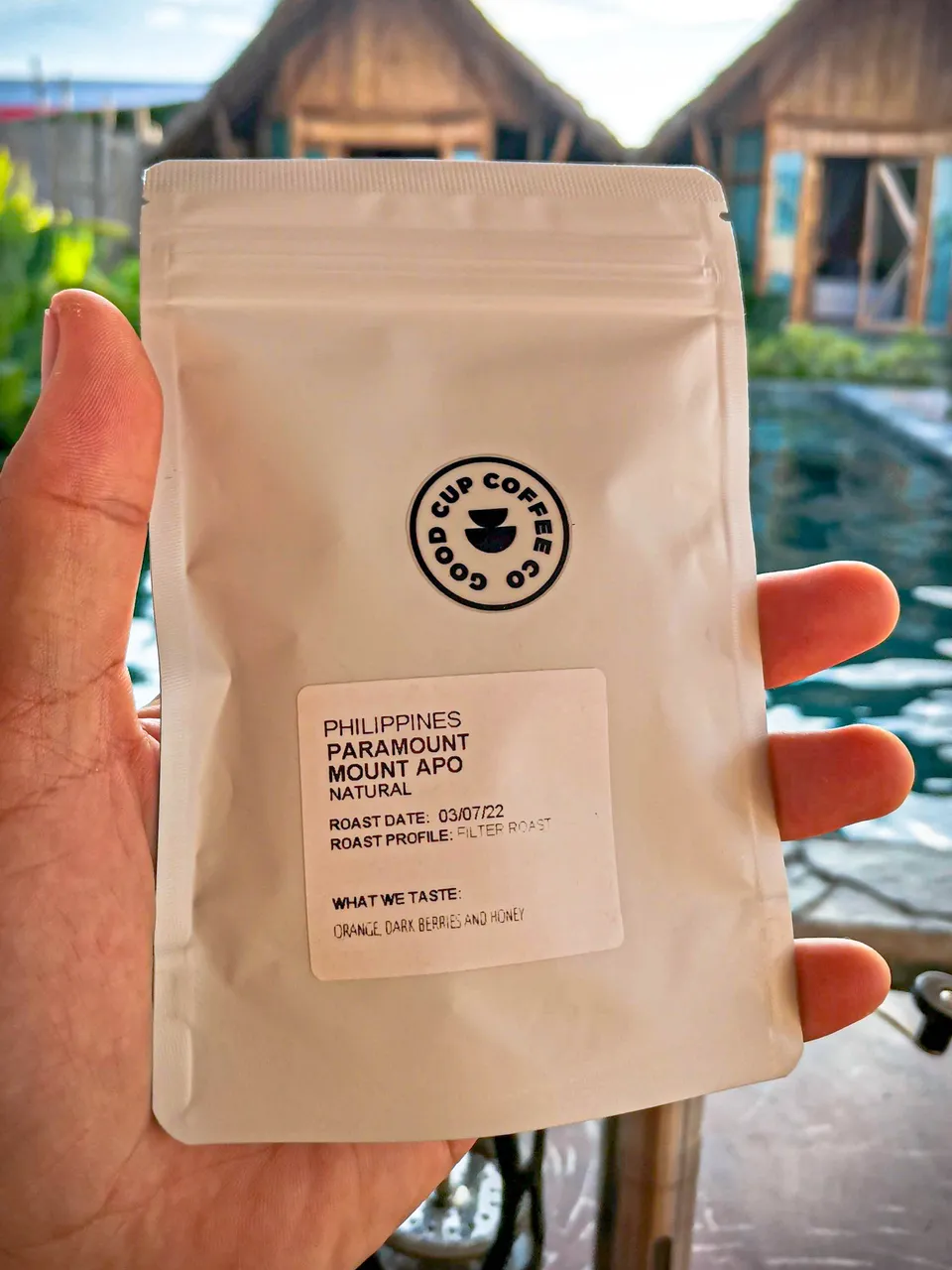 | 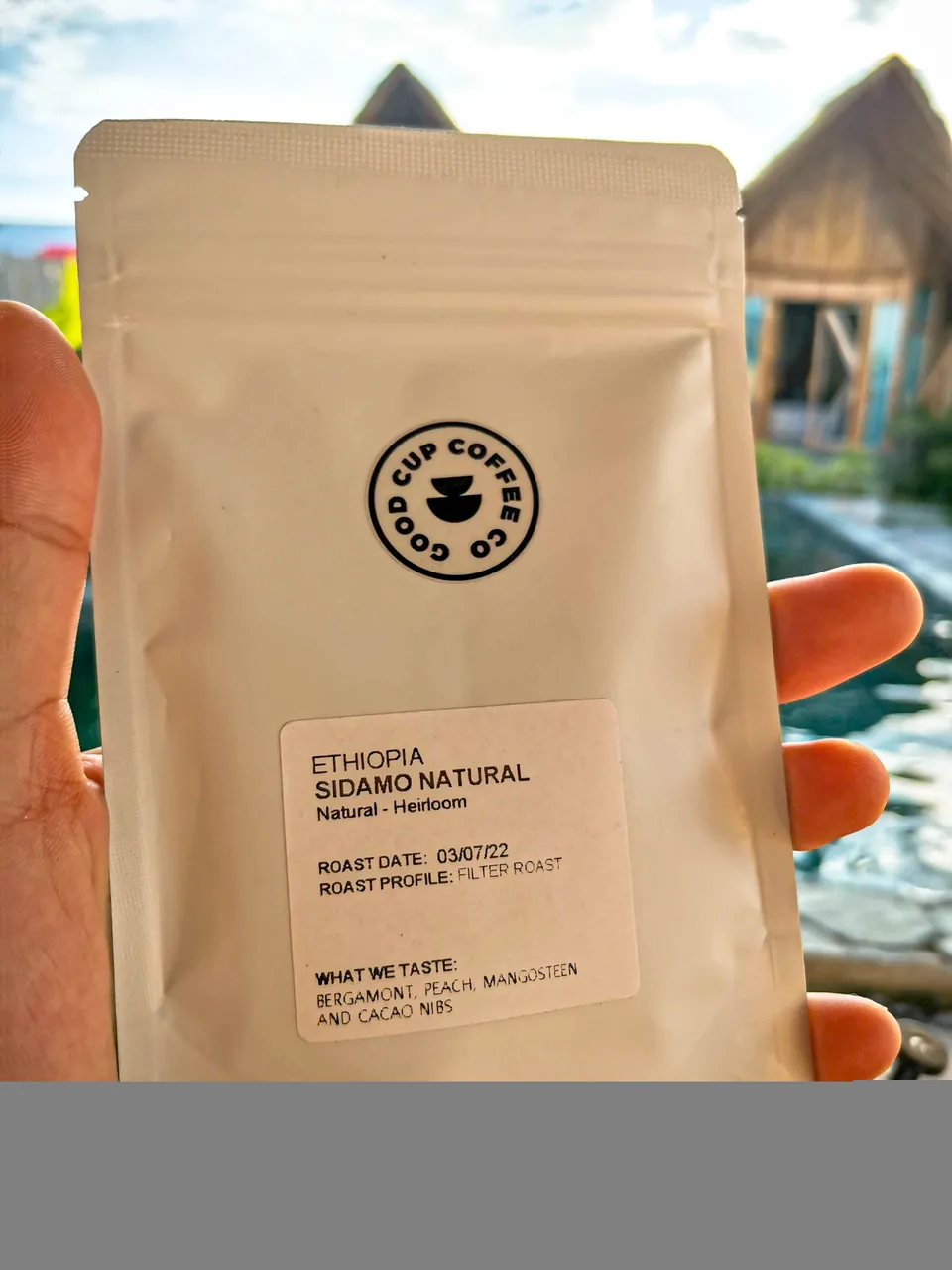 | 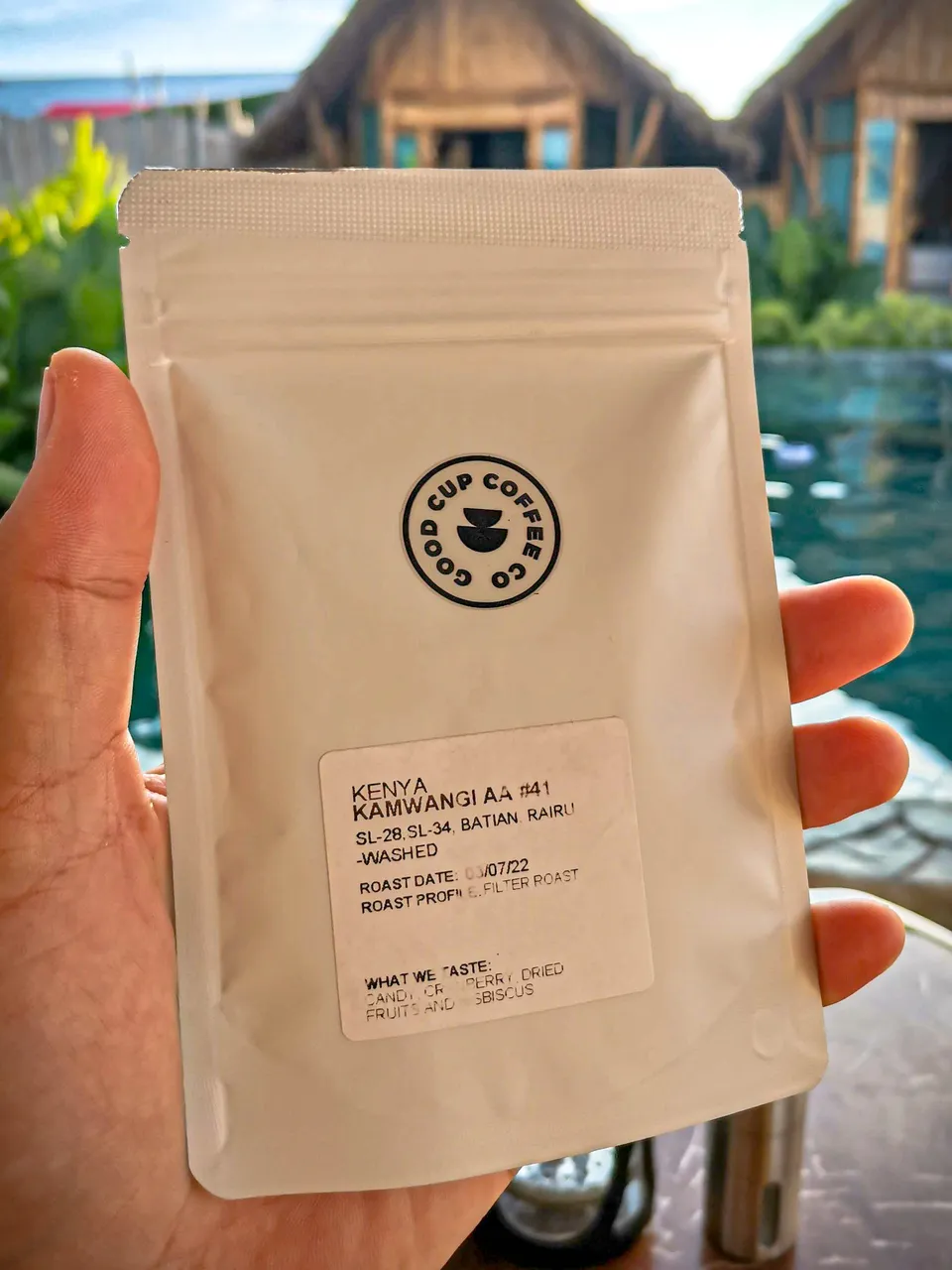 |
|---|

PARAMOUNT MOUNT APO
The first beans I brewed were the Paramount Mount Apo from the Philippines. I've heard good reviews about the coffee beans from Mt. Apo. There was one variety that I really wanted to buy from The Good Cup Coffee. It was called BATAFAMA and it was also from Mt. Apo but it sold out and I didn't have the chance to buy it.
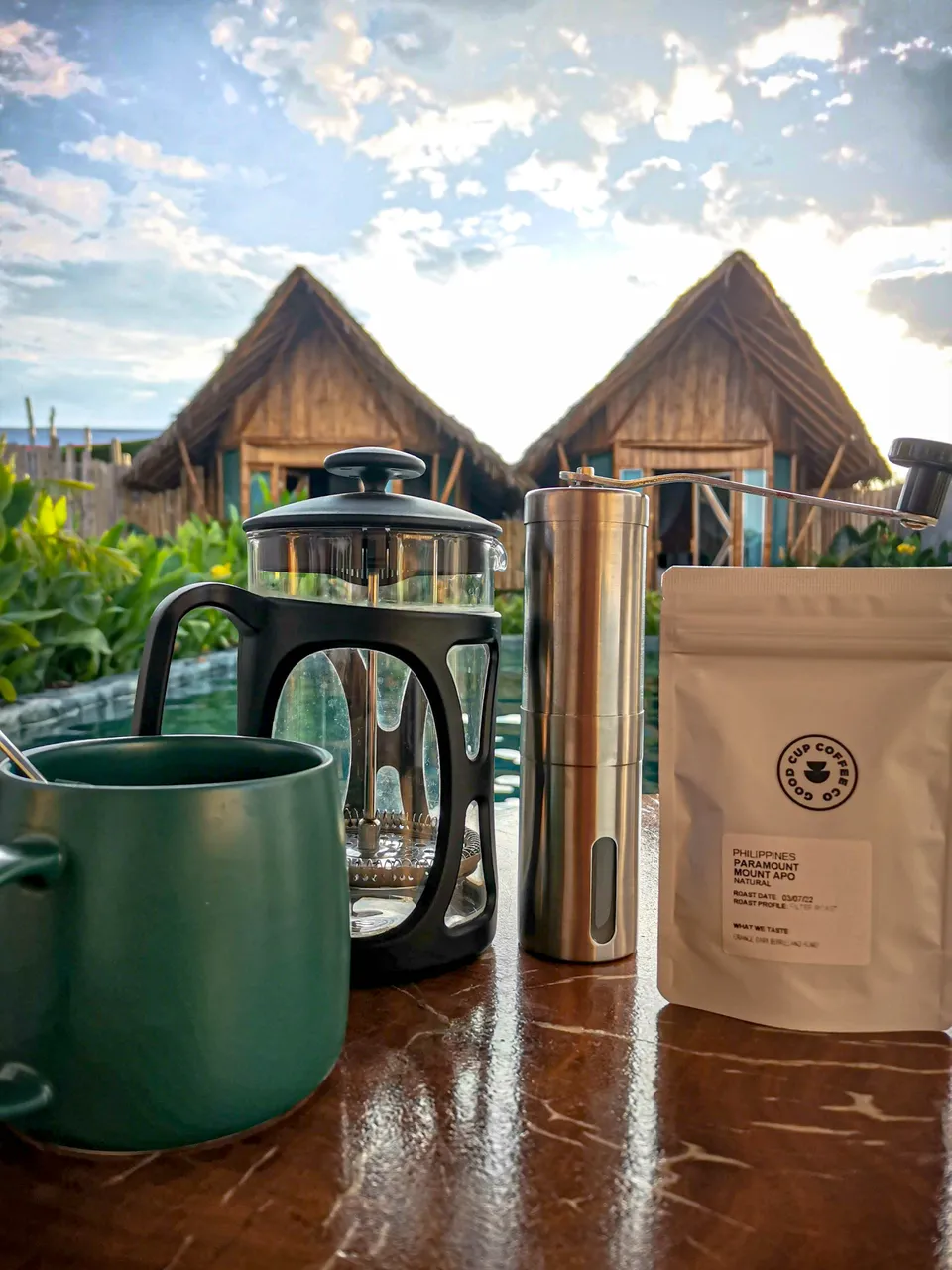
Any beans from Mt. Apo were still worth being excited about. I brought my coffee grinder and French press with me on this trip. I didn't bring my weighing scale because I thought I didn't need it. I was wrong.
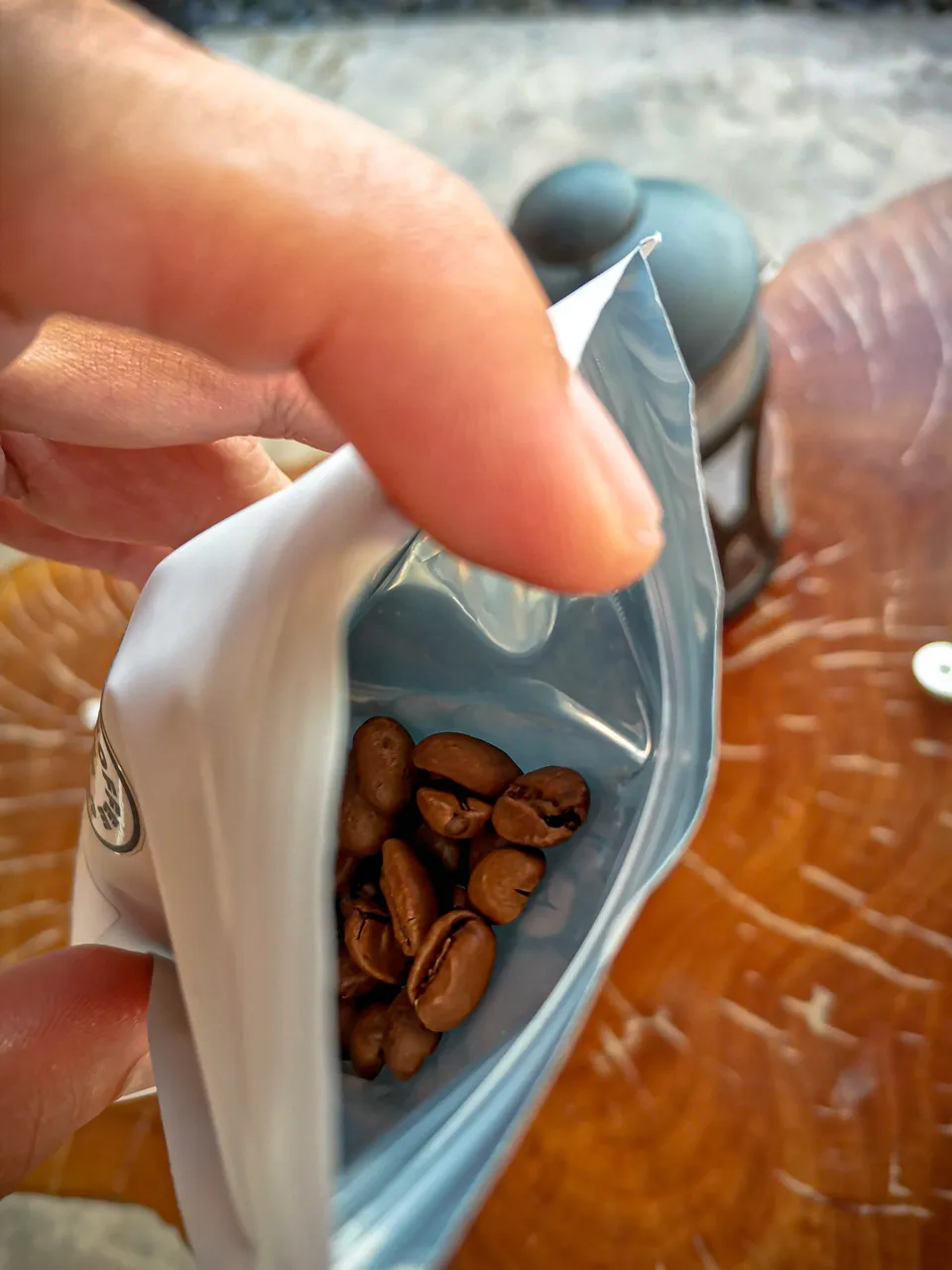

I opened the sampler pack and saw golden brown coffee beans. The smell wafted towards my nose and it reminded me of fruits and sugar. I knew I was going to enjoy it. The sampler contained 20 g of beans which was usual for brewing a cup. I placed the beans inside the coffee grinder and cranked the handle. Manual grinding is an arm workout.

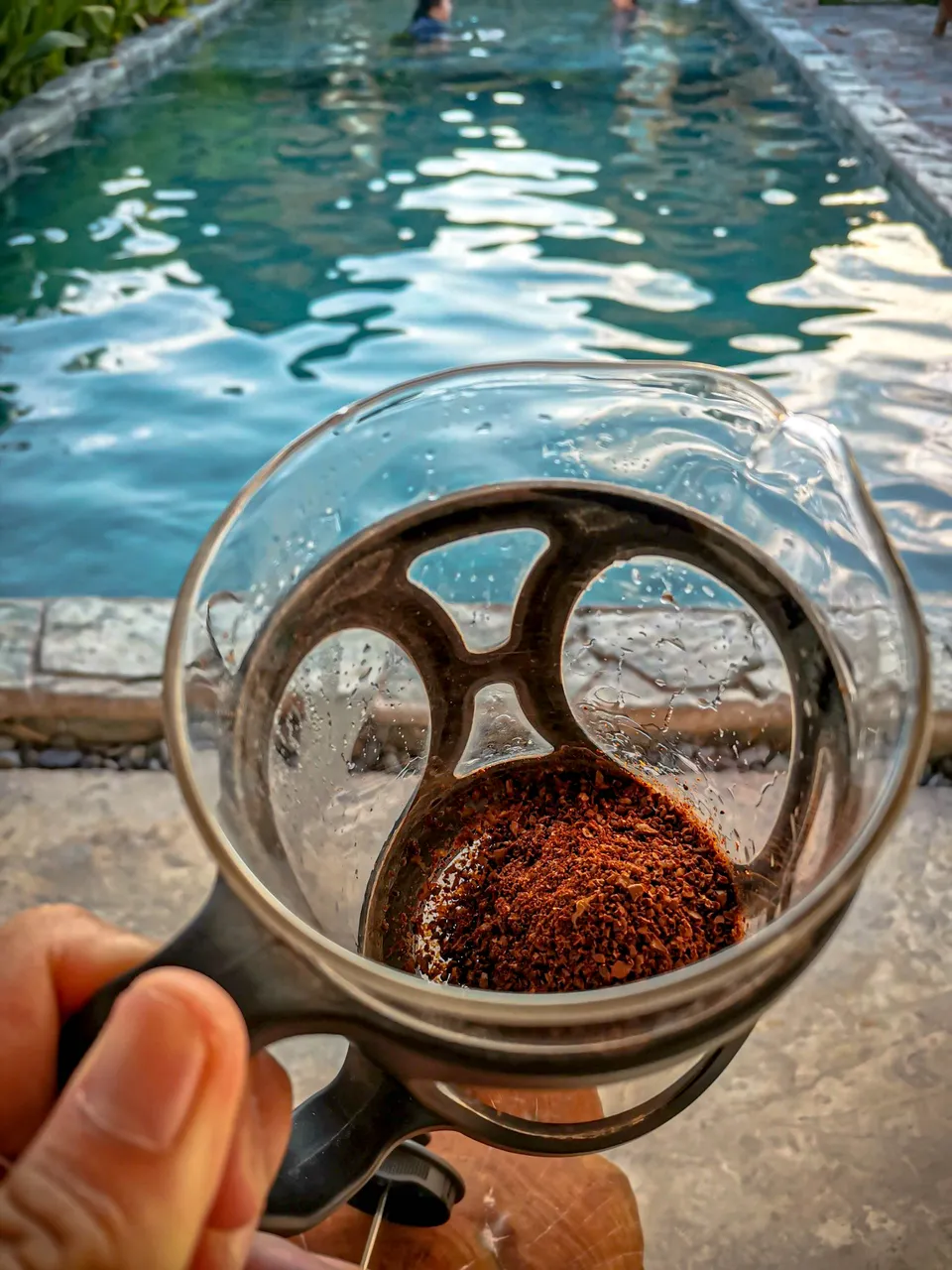
If I have a lot of time when brewing, I always pre-heat my French press by putting hot water inside it. This prevents a drastic temperature drop when I pour the hot water unto the coffee grounds. After a few minutes of grinding, I throw the hot water for the pre-heating and put the coffee grounds inside the press.
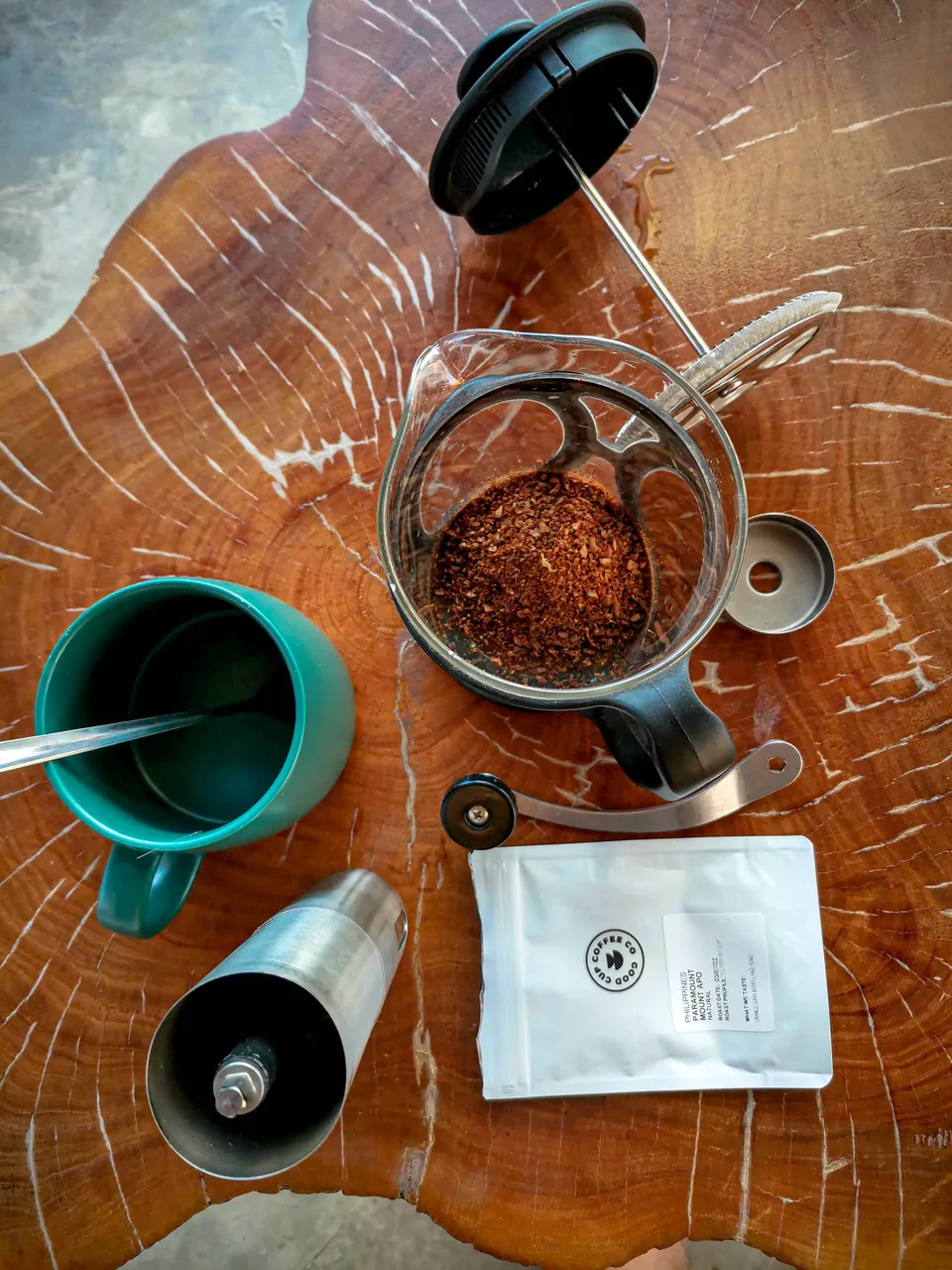
This was when I realized I should have brought my weighing scale to measure how much hot water to add. I also realized that the French press I brought was too big for a 20 g brew. There was no turning back. I normally brew with a ratio of 1:14 and I tried to estimate adding 280 mL of water to my French press.
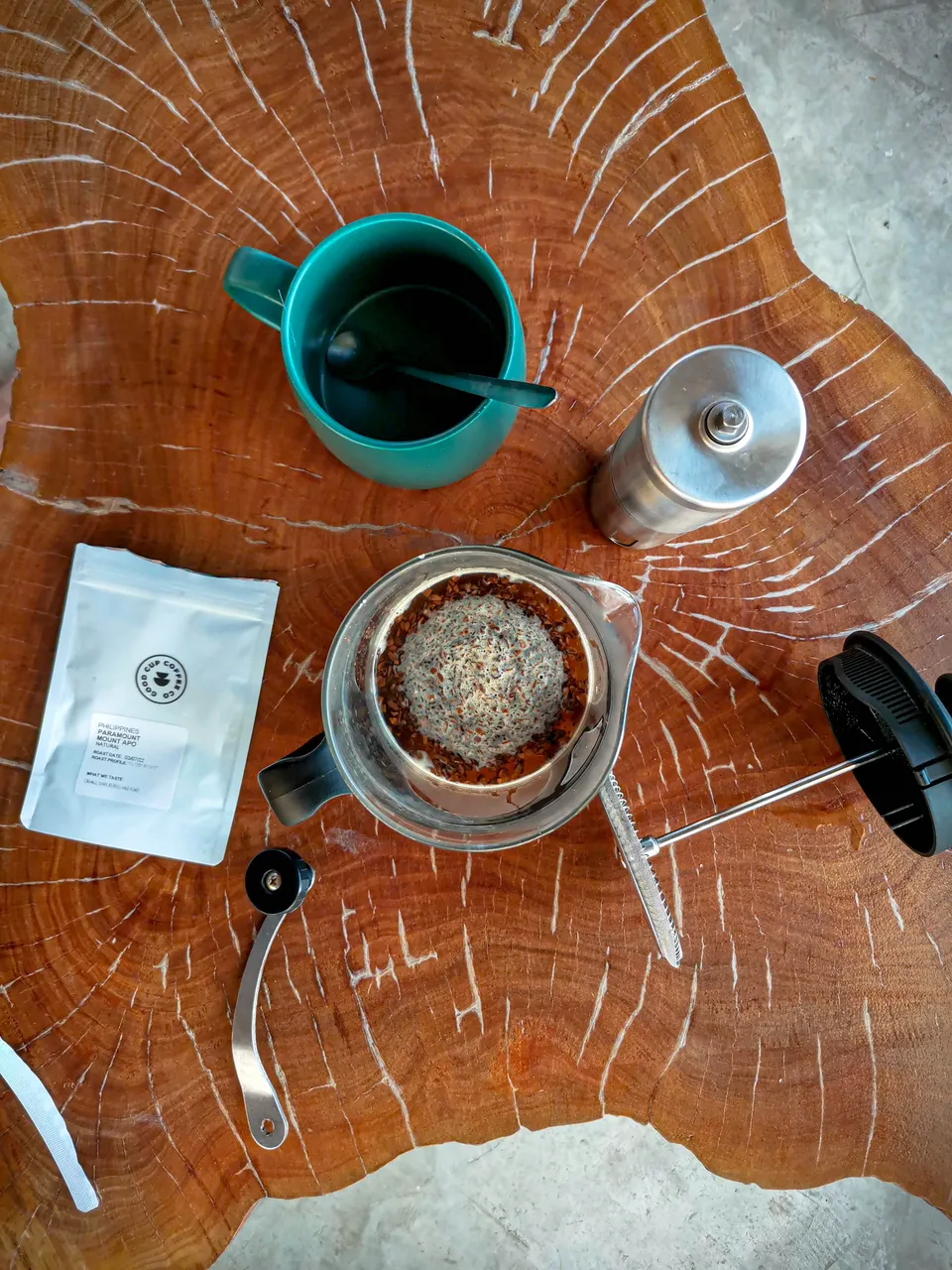
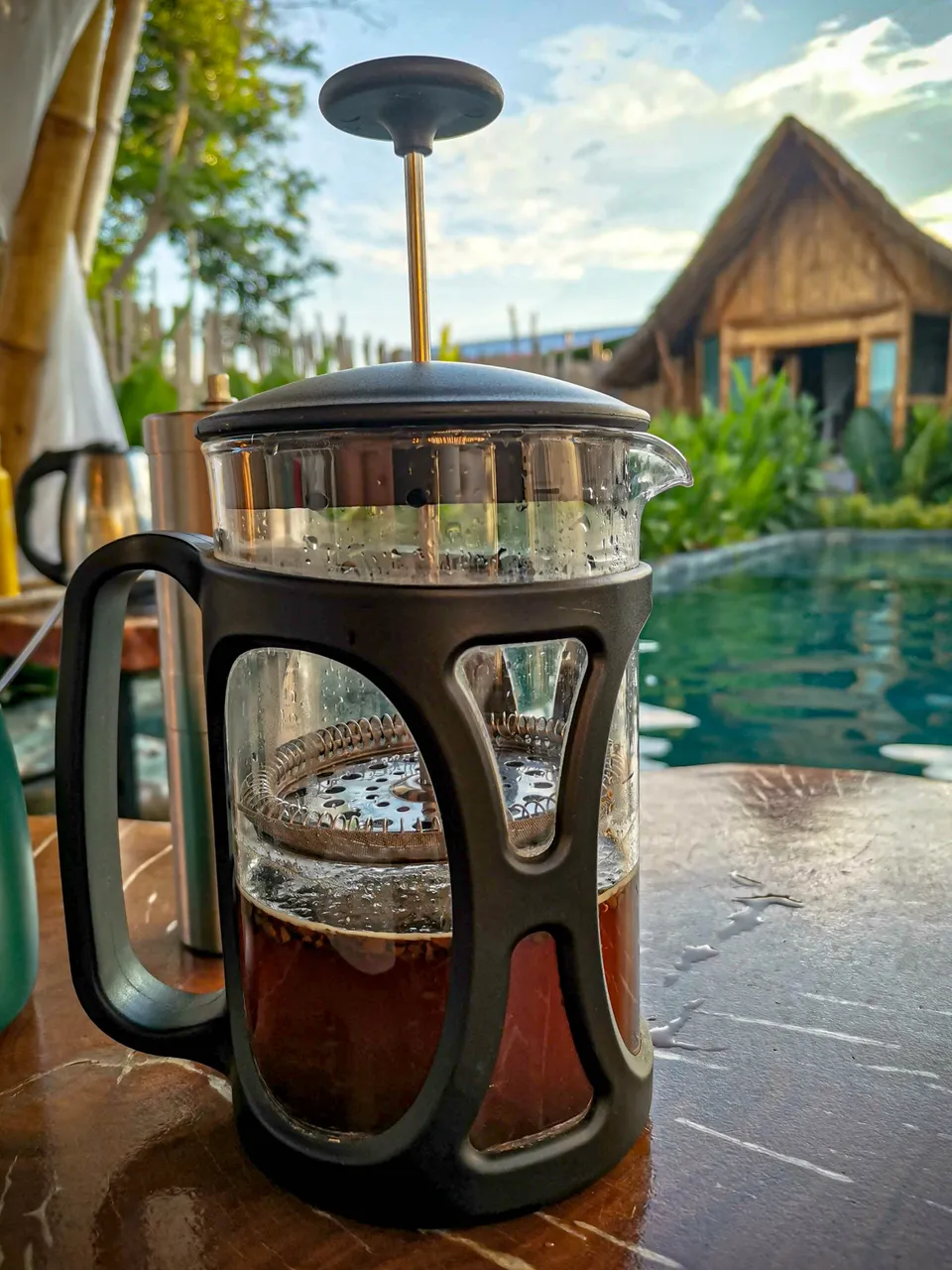
How good were my estimation skills? Well, not very good. I think I added 380 mL of water. I knew the coffee was going to be really watered down. I started my 4-minute timer and waited. After the alarm went off, I pushed the plunger and poured the coffee into a big mug.
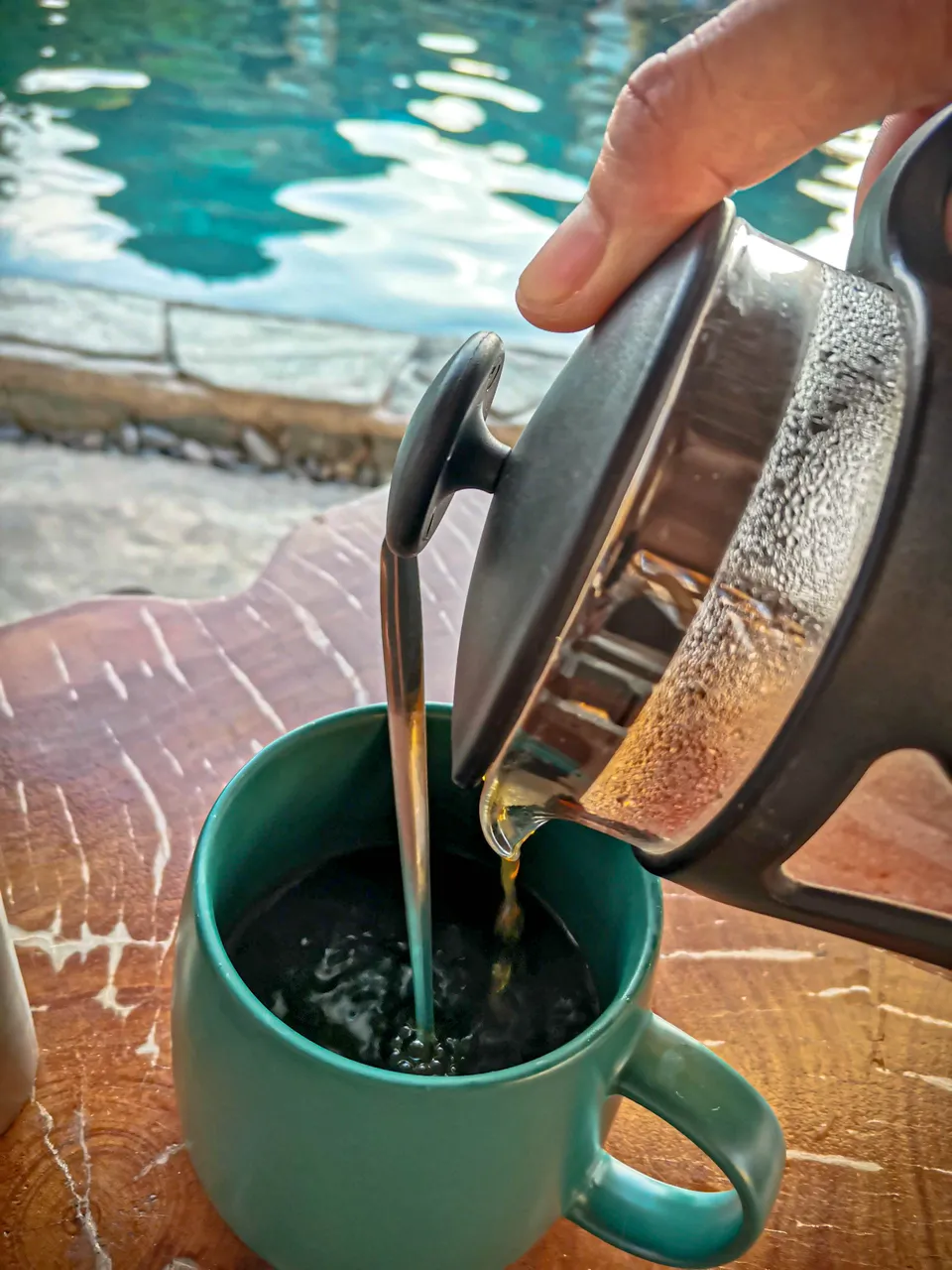
Well, the coffee was diluted. But surprisingly, it still tasted really good. The flavor profile said Orange, Dark Berries, and Honey. The fruity notes definitely came out. It was light-bodied (obviously because of the dilution) and slightly acidic. I added a bit of sugar and that made it even better. I don't drink my coffee with milk but I tend to add a lot of sugar. The sweetness brought out more of the fruity notes of the coffee. It was the perfect afternoon coffee.
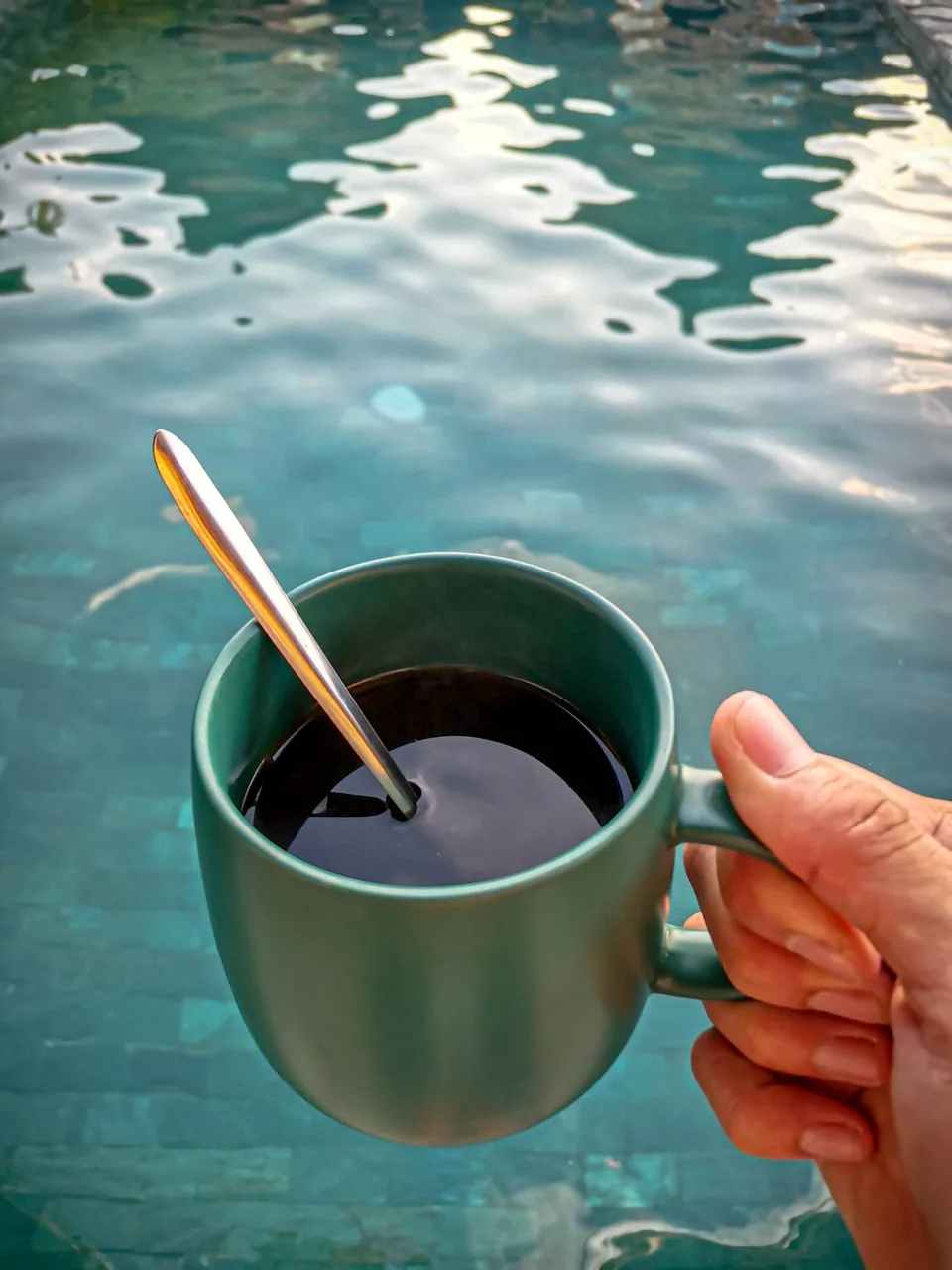
I had high expectations of the beans because of the reviews of Mt. Apo beans and although I could have done my brewing better, I was still satisfied with what I got. I know I'd want to brew the beans the right way and experience the taste using the right proportions.

PART 2: SIDAMO NATURAL & KAMWANGI AA #41
I know there are two more beans but I'll leave you on a bit of a cliffhanger. I'll be writing about the other beans in my next post. I finally got the proportion of the water right in my next brews. Comparing the three gave me the next coffee beans to get from The Good Cup.
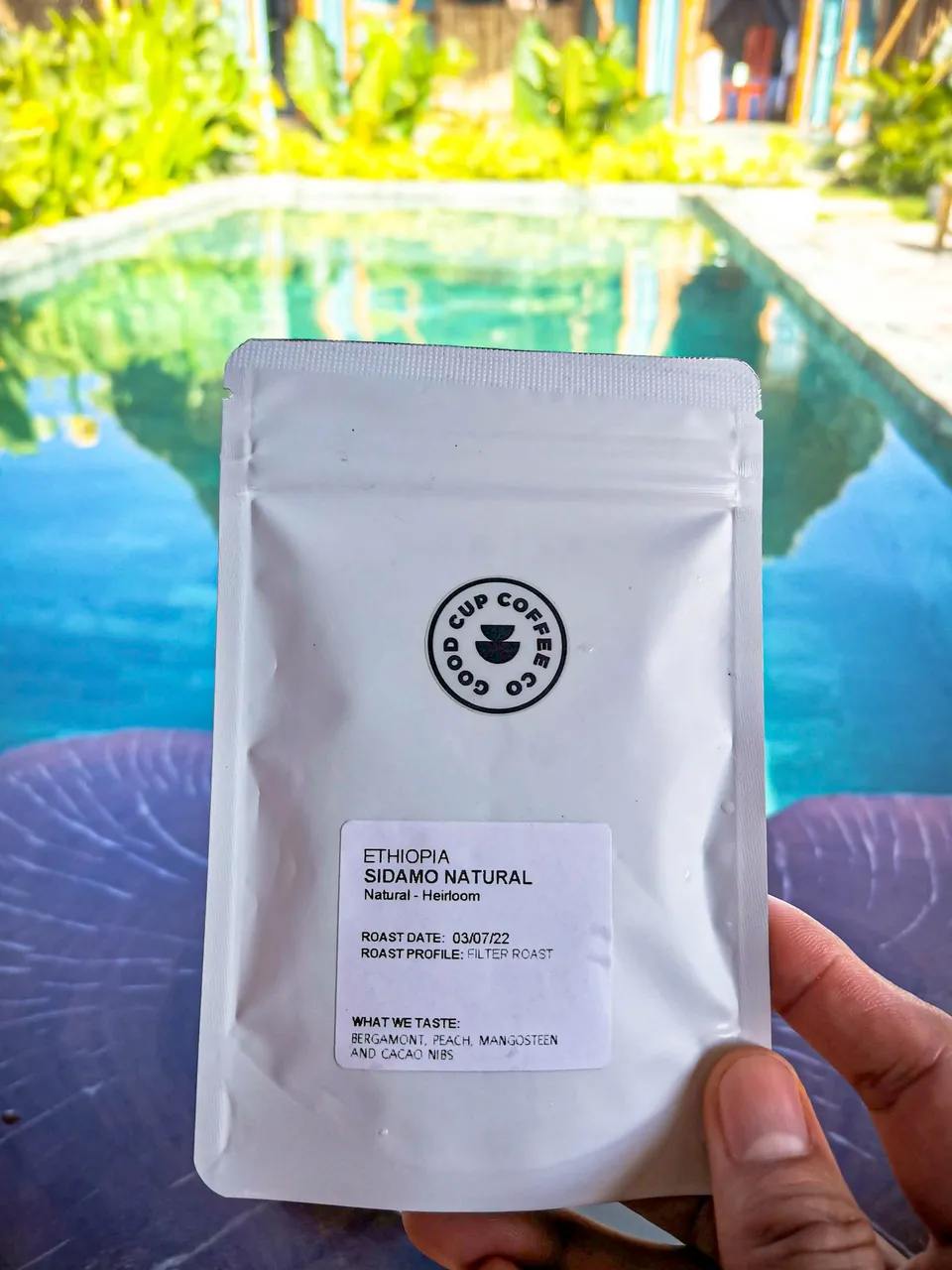
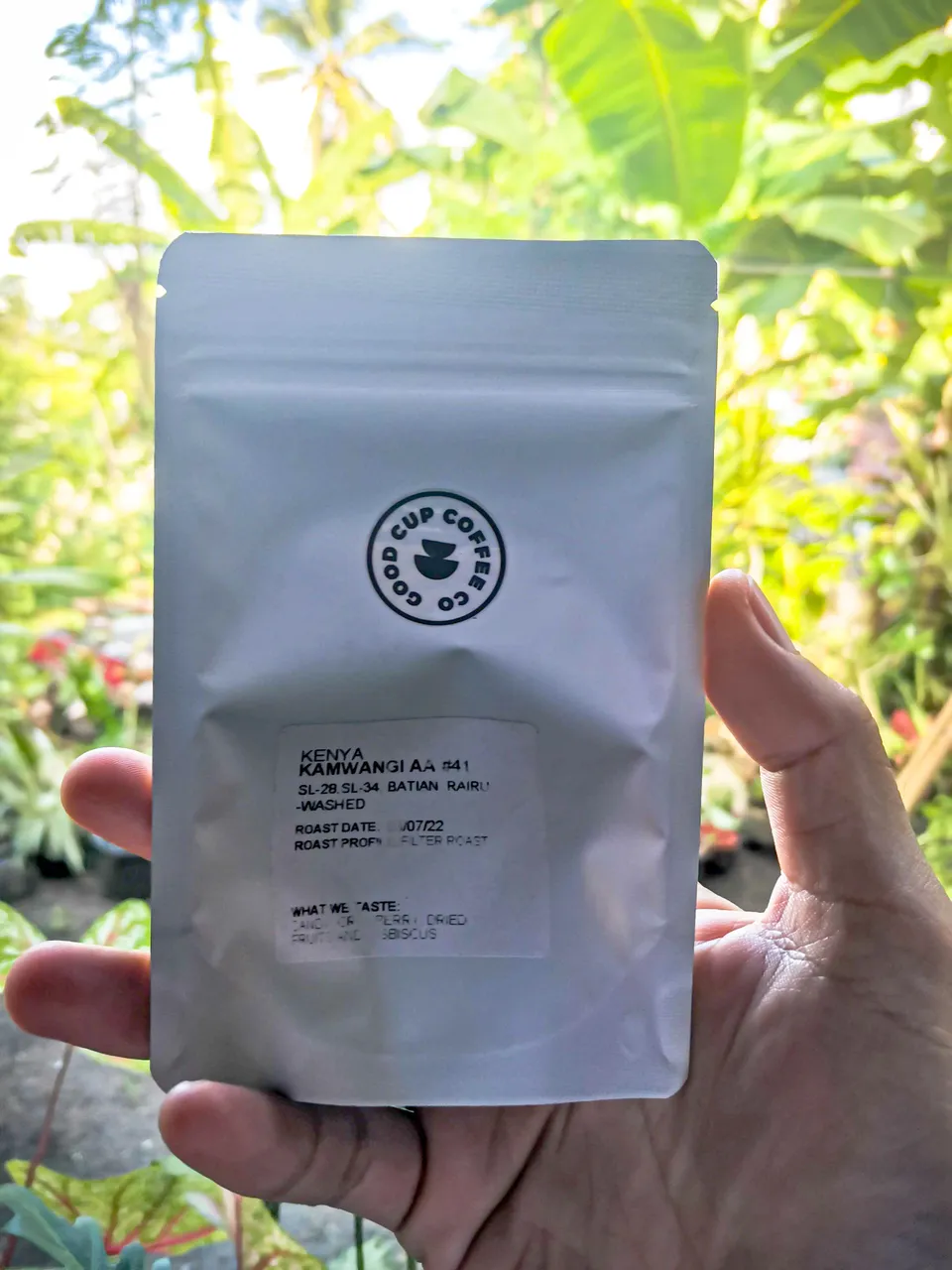

That's it for now! Thanks for reaching this part. I hope I intrigued both the coffee and non-lovers out there with my post. Expect more coffee content from me in the next few posts. Cheers!
